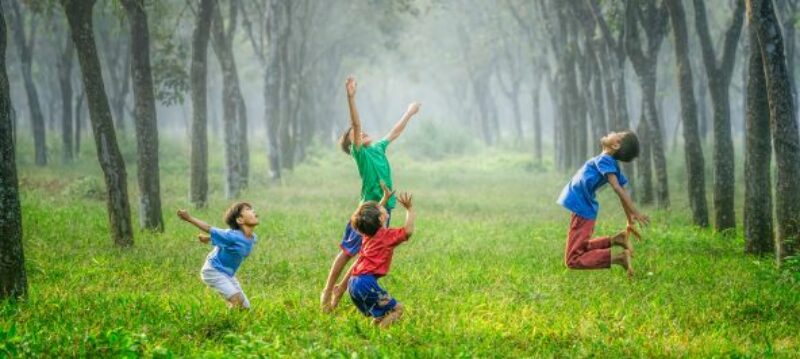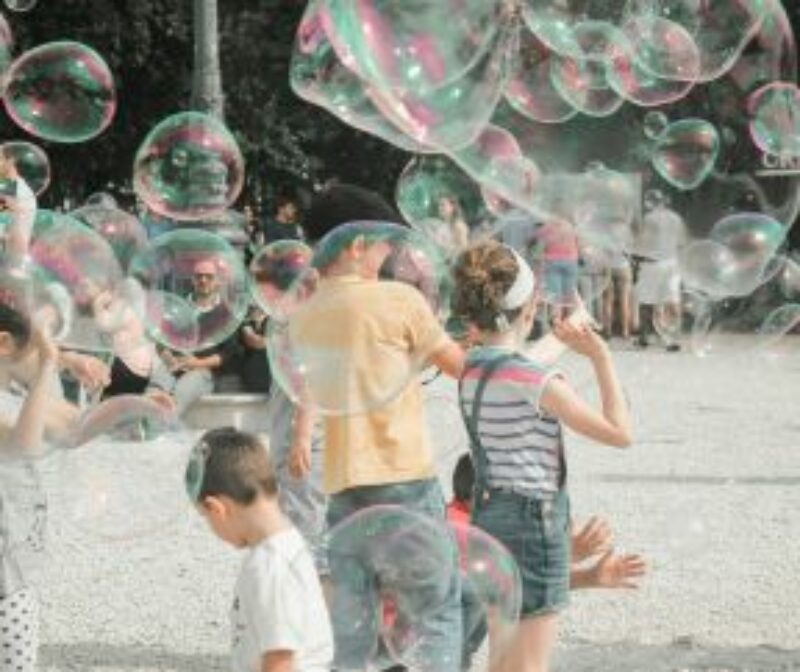Photo Credit: Esther Tan
I am always amazed at how resilient children can be during life challenges. This time a few years ago, I witnessed a group of six children in the elementary school I worked at laughing, playing, and supporting their friend who had been hospitalized. Anyone watching these kids would not have guessed that they had survived a devastating earthquake that occurred a few days earlier. It’s incredible to see what social support and other coping strategies can do for children’s well-being. These children’s collective immunity against life challenges seemed tight like a force to be reckoned with.
As we experience challenges from the COVID-19 pandemic—such as limited in-person interactions and closures of schools and business—how can we help kids develop coping-resiliency strategies during moment of uncertainty? Many times, children adapt to challenges by observing what those around them do. As caring adults, we can encourage our children to develop new strategies to help them cope with trauma. Keep in mind: every child is different and, therefore, so are his/her coping-resiliency styles.
Understanding and Developing Children’s Coping or Adaptive-Resiliency Styles
Just as we identify children’s learning styles to help them effectively study, it is also crucial to understand their unique coping styles in order to better support them. Everyone generally has a specific coping strategy that they are drawn to when they feel stressed—whether it’s talking to others, playing sports, listening to music, or drawing. Therefore, it’s important to provide children with a safe, creative space where they, too, can express themselves, especially when their understanding of a traumatic event might be limited. When we equip children and adolescents with adaptive strategies, they are able to cope in healthy ways.
The Basic Ph Model
An integrative model used for identifying coping and resiliency strategies is the Basic Ph Model, developed by Israeli psychologist Dr. Mooli Lahad1. Often applied in emotional first-aid and emergency preparedness courses in Singapore, Japan, Sri Lanka, and Europe, this model is simple and easy to use on young children as a resiliency assessment, intervention, or recovery approach.This model suggests that there are six potential characteristics or dimensions that are at the core of an individual’s coping style1:
(B) Belief: (e.g. faith, values, feeling of mission/meaning) Turning to one’s belief system as a means of coping and relying on one’s core values. Parents and caring adults can do this by reaching out to their faith community and providing opportunities for children to spend time with others who share their beliefs.
(A) Affect: (e.g. ventilate, talk to a friend, cry, laugh, expression through writing) Feelings or emotions. Children who use affect rely on their ability to express through emotions. Adults can model expressions of genuine feelings, showing how it’s permissible and okay to share anxieties, fear, anger, sorrow, and grief.
(S) Social: (e.g. belonging to a group, playing with friends, humor) These children typically seek and control through friendships. Families and school can increase connections and decrease isolation. This restores emotional security and strengthens children’s well-being.
(I) Imagination: (e.g. day-dreaming, draw, drama, dance, guided imagery, pleasant thoughts) Children turn to creativity as a means of coping with trauma. Adults can supply art materials, and take children on nature walks, and provide a conducive environment to encourage expression.
(C) Cognitive: (e.g. problem-solving, information-gathering, self-talk) This is usually with older children who problem solve or gather information to make sense of a situation. They will benefit from honest, age-appropriate dialogue regarding events. These children will be open to ways to address their fears, anxieties, and problems.
(Ph) Physical: (e.g. expression through body movements, sports, hiking, relaxing, working) Physical activity has a dual benefit of allowing informal processing of and necessary buffer time in a non-threatening way that gives space distance from intense issues.
As you review this model, consider:
- Which of these six belongs to your children’s coping-resiliency style?
- Do your children have more than one coping-resiliency style?
- Which styles can they learn and adapt for different seasons?
If your child copes with adversity through social interactions (S), it might be helpful to let him/her stay in touch with friends through phone calls or video conferencing so that they can still have the social support they need and not feel alone. As a caring adult, it is also critical for you to be their social support, providing them with emotional security as they experience abrupt isolation from their daily routines.
If your child is imaginative or creative (I), provide a variety of art materials at home (e.g. drawing paper, crayons, paint brushes, canvases, etc.), so your child can doodle, paint, or even design a card for a friend. You can even use this opportunity as parent-child bonding time to sing or create crafts together. Music is often a great source of comfort and inspiration for children who lean on their imagination as their coping-resiliency style. For some children, sports or outdoor activities in your backyard (P) may help them cope better, whereas others might prefer to talk through and make sense of the situation with an adult (C).
Just Be Ourselves
Whether you’re a parent, teacher, mentor, or coach, it is important to help children develop resiliency when facing adversity such as this coronavirus. Remember, children need caring adults who will help them through the ups and downs of life by providing them guidance. At such as a time as this, I pray that you also have a support system in your life to help you thrive.
Tap onto these resiliency strategies to help children strengthen their skills when dealing with psychological stress. In times of restriction, it is helpful to have a variety of strategies you can fall back on. A key reminder is to allow both ourselves and our children to have a time where we can ‘just be ourselves’. You will be surprised at what that can do for us.
References
1. Lahad, Mooli. (2016). From Victim to Victor: The Development of the BASIC PH Model of Coping and Resiliency. Traumatology. 23. 10.1037/trm0000105
2. Adapted descriptions from https://www.lcps.org/cms/lib4/VA01000195/Centricity/Domain/8931/HOW%20CHILDREN%20COPE.pdf
Continue Exploring

Blog
A Practice: Digging Deep to Forgive
Becoming a more forgiving person is a process. If you are ready to start healing, ask yourself the following questions. Make sure you have the support you need.

Emotions
Discovering Joy
This post is based upon an interview between Psychology Today and Dr. Pam King

Emotions
Why You Need to Make Time for Play
You might be surprised about the benefits of play for your wellbeing and your spiritual health. Here's how to get more in your life.
